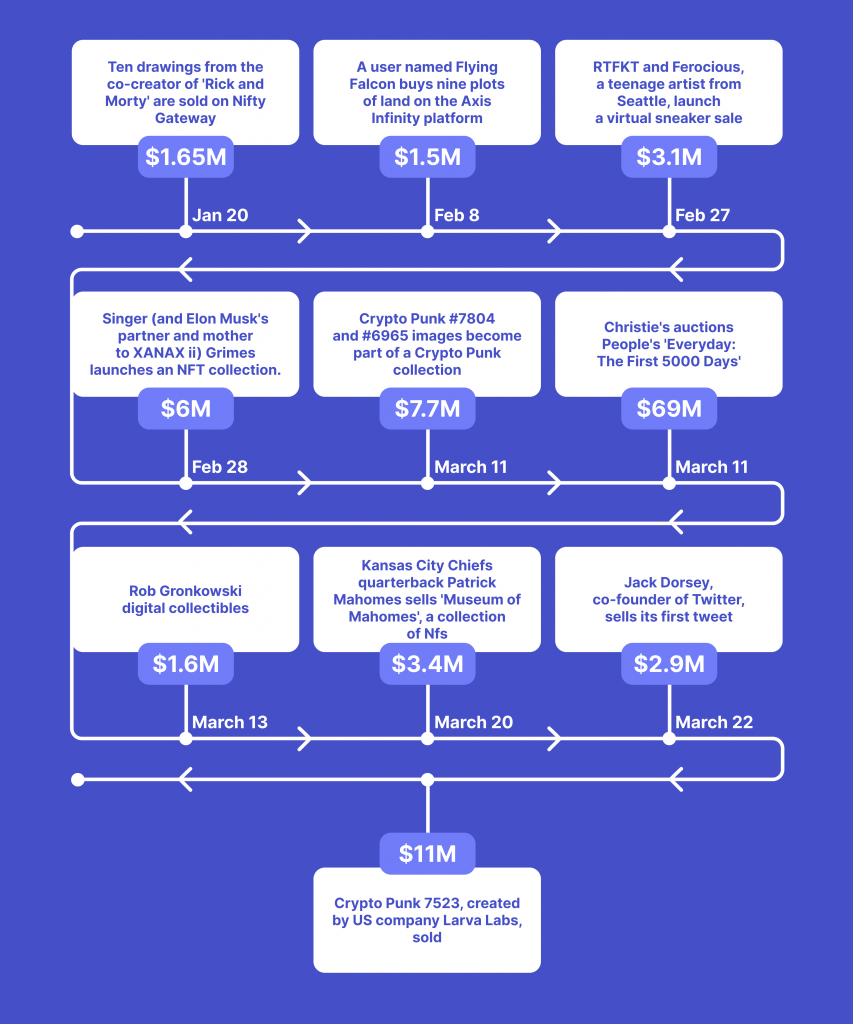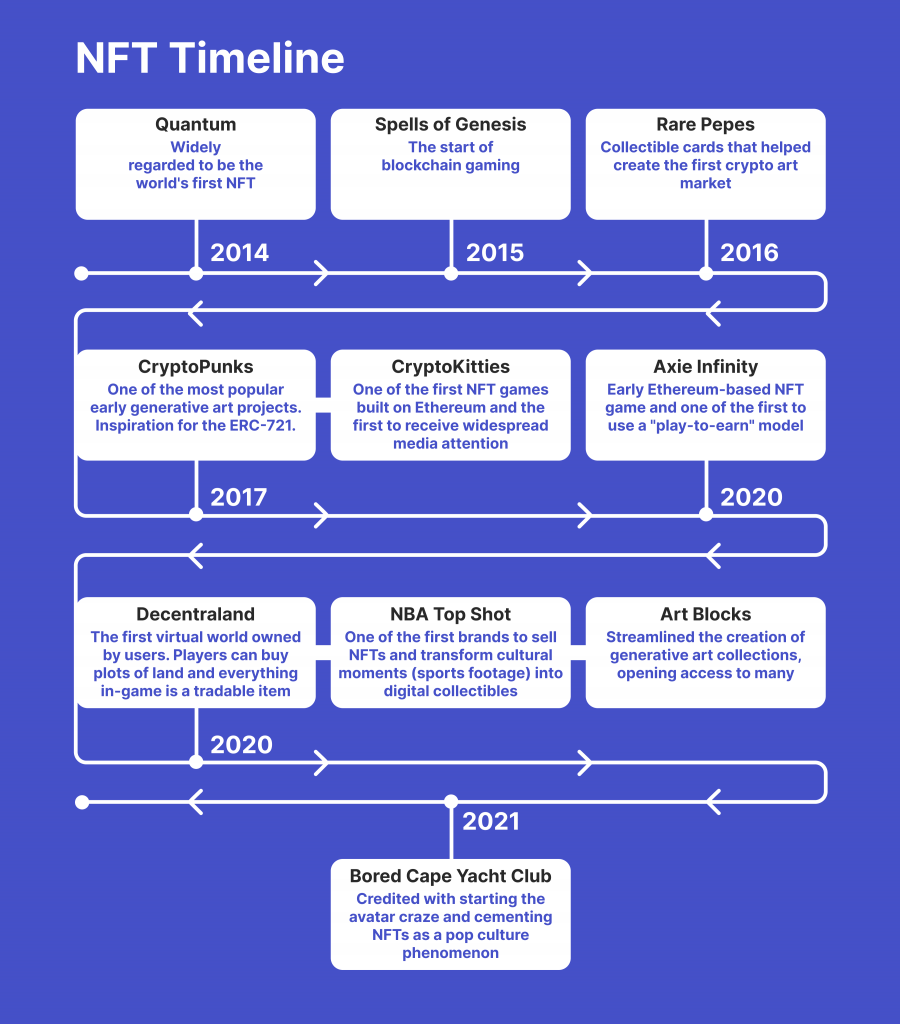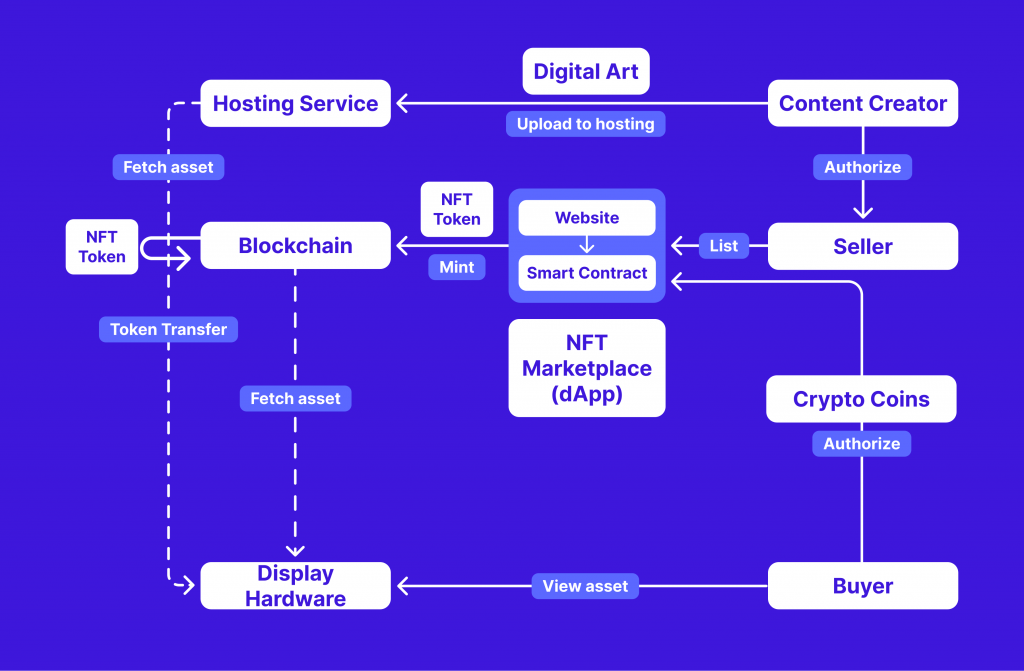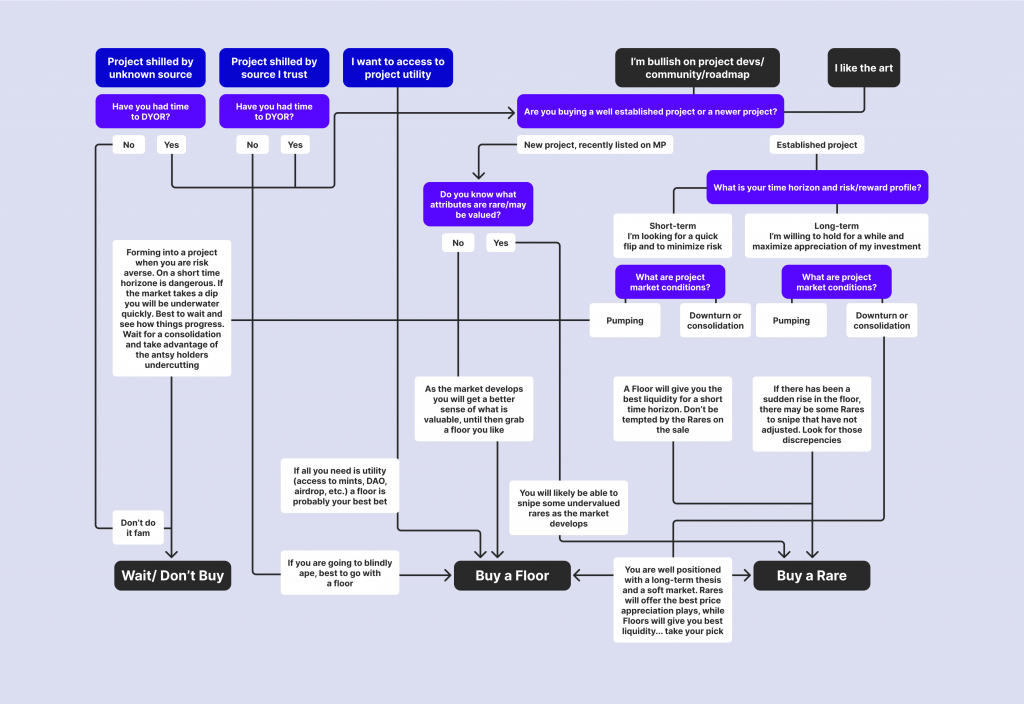What are CryptoPunks? And Where Are NFTs Headed?
In the modern reality of digital art and blockchain innovation, few entities have captured the imagination and wallets of collectors quite like CryptoPunks. These 24×24-pixel 8-bit-style avatars represent a groundbreaking experience in non-fungible tokens (NFTs), combining art, technology, and scarcity to create a digital collectible phenomenon.
So, what are CryptoPunks, and what significant role do they play in the NFT market evolution?
Key Takeaways:
- Launched in 2017 by Larva Labs, CryptoPunks revolutionized NFTs, starting as free digital collectibles before skyrocketing in value.
- Each of the 10,000 unique CryptoPunks stored on Ethereum boasts distinct pixel art and attributes, driving their high market value.
- CryptoPunks pioneered NFTs, reshaping digital art ownership. Despite challenges, their future involves collaborations and integration into diverse industries beyond art.
Origin and History of CryptoPunks NFTs
The story of CryptoPunk NFT begins in 2017, when developers Matt Hall and John Watkinson, co-founders of New York-based Larva Labs, a small software company known for its experimentation with blockchain technology and digital art, introduced these pixelated personas to the world.
The CryptoPunk NFT project was launched on the Ethereum blockchain. It involved the creation of 10,000 unique 24×24 pixel art characters, each with distinct attributes and characteristics. These characters were stored as NFTs on the Ethereum blockchain, making them one of the earliest examples of NFT art.
Initially, the CryptoPunks were distributed for free to anyone with an Ethereum wallet. Users could claim a CryptoPunk by simply paying the gas fee for the transaction. However, as the project gained popularity, the value of CryptoPunks started to rise, and they began to be traded among art collectors.
The reception of CryptoPunks was mixed initially, with some dismissing them as simple pixel art while others recognized their potential as pioneers in the NFT space.
Over time, CryptoPunks gained a cult following and became highly sought after by collectors and investors, with some individual punks selling for significant amounts of money.
Today, CryptoPunks are considered one of the most iconic and valuable NFT projects, playing an important role in popularising the concept of digital collectibles and NFT art.
CryptoPunk Ecosystem and Characteristics
At the heart of CryptoPunks lies the Ethereum blockchain, where each punk’s proof of ownership is securely stored. Despite their miniature size and simplistic design, CryptoPunks’ value far exceeds their pixel count.
The rarity of specific attributes, such as alien or zombie traits, contributes to their allure, with some punks fetching millions of dollars in the resale market.

Moreover, the recent surge in NFT interest has propelled CryptoPunks into the spotlight, with notable sales at prestigious auction houses like Christie’s and Sotheby’s.
Outstanding Characteristics of CryptoPunks
But what exactly makes CryptoPunks so unique and popular? Let’s discuss some unique features of these simple yet revolutionary digital art pieces that make them stand out.
Pixel Art style
Each CryptoPunk is represented as a unique 24×24 pixel art image. This distinctive style is reminiscent of early computer graphics and adds to the charm and collectibility of CryptoPunks.
Limited Supply and Uniqueness
There are only 10,000 CryptoPunks in existence, each with its own distinct combination of attributes and traits. This limited supply and the uniqueness of each punk contribute to their rarity and value.
Attributes and Traits
One of the key drivers behind the value of CryptoPunks is their unique attributes and traits. From gender to species, each punk boasts a distinct combination of features that can significantly impact its market price. These attributes are randomly generated, leading to various possible combinations and ensuring that each CryptoPunk is one-of-a-kind.
For example, alien CryptoPunks, of which there are only nine, command a premium due to their scarcity. Similarly, punks with rare accessories like the coveted “beanie” are highly sought after by collectors.
Ownership and Provenance on The Blockchain
CryptoPunks are NFTs stored on the Ethereum blockchain. This means that ownership of each CryptoPunk is recorded and verified on the blockchain, providing a transparent and immutable record of ownership and provenance. This blockchain-based ownership system adds authenticity and security to the CryptoPunks ecosystem.
Significance and Impact on The NFT Sphere
CryptoPunks played a crucial role in popularising the concept of NFTs. As one of the earliest examples of NFT art, CryptoPunks demonstrated the potential of blockchain technology to create unique, verifiable, and tradable digital assets.
Their success helped to open the way for the explosion of NFTs across various industries, including art, gaming, collectibles, and more.

CryptoPunks significantly influenced the digital art market by challenging traditional concepts of art ownership and distribution. They introduced a new paradigm where digital artworks could be owned, traded, and valued like physical art pieces.
This influence caused the growth of the digital art market and encouraged artists and collectors to explore new possibilities offered by blockchain technology.
Market Dynamics and Purchase Process

CryptoPunks have been sold through various channels, including online marketplaces, auctions, and direct sales between collectors. Some of the most significant sales have occurred through auctions, where CryptoPunks with rare attributes or traits have fetched high prices.
Additionally, secondary marketplaces have emerged where collectors can buy, sell, and trade CryptoPunks, contributing to the liquidity and trading volume of the CryptoPunks market.
Platforms like OpenSea and the official CryptoPunks marketplace offer ways to buy, sell, and trade these unique NFTs. Users must utilize Web3 browser plugins like MetaMask to connect their Ethereum wallets and participate in auctions or direct purchases.
Despite the accessibility of the purchase process, the high demand for CryptoPunks often leads to competitive bidding and steep valuations.

The prices of CryptoPunks have experienced significant fluctuations over time, influenced by factors such as demand, scarcity, trends in the broader NFT market, and speculation.
Certain traits or attributes may become more desirable at different times, leading to fluctuations in prices for CryptoPunks with those attributes. Moreover, external events or developments in the NFT space can also impact the prices of CryptoPunks.
Celebrity endorsements and cultural phenomena can notably impact the CryptoPunks market. When celebrities publicly endorse or acquire CryptoPunks, it can attract attention from their fan base and drive up demand for those specific punks or CryptoPunks in general.
Additionally, cultural phenomena or events that bring attention to NFTs, digital art, or blockchain technology as a whole can indirectly influence the CryptoPunks market by increasing interest and participation from collectors, investors, and speculators.
Thus, celebrity endorsements and cultural phenomena can contribute to both short-term spikes in demand and long-term trends in the CryptoPunks market.
Fast Fact:
The most expensive CryptoPunk ever sold is Punk #5822. The alien-style punk featuring a blue bandana sold for $23 million on February 12, 2022
Controversies and Challenges
Like any emerging technology, CryptoPunks have faced their fair share of controversies and challenges. From technical glitches in the smart contract code to debates over the authenticity of first-edition punks, the story of CryptoPunks has been marked by uncertainty and intrigue. Larva Labs’ decision to reissue certain punks following a contract error sparked debate within the community, highlighting the complexities of blockchain governance and digital ownership.
One of the main criticisms of CryptoPunks and other NFT projects is the environmental impact of blockchain transactions. Minting and trading NFTs involve significant energy consumption, particularly on blockchains like Ethereum that rely on proof-of-work consensus mechanisms.
Critics argue that the carbon footprint associated with NFTs is excessive and unsustainable, especially given the growing awareness of climate change and the need to reduce carbon emissions.
Another criticism of CryptoPunks is the speculation and market volatility that surrounds them. Like other collectibles and digital assets, CryptoPunks are subject to speculative bubbles and market hype, leading to rapid price fluctuations and potential financial risks for investors.
Some critics argue that the high prices paid for CryptoPunks are driven more by speculation and FOMO (fear of missing out) than by intrinsic value and that the market could be susceptible to crashes or corrections.
Ethical implications of ownership and exclusivity
There are ethical concerns regarding the ownership and exclusivity of CryptoPunks, particularly in the context of digital art and culture. Critics argue that owning and trading digital avatars or characters raises questions about cultural appropriation, commodification, and the exclusion of marginalized communities from the NFT space.
Additionally, the concentration of ownership among a few collectors and investors may deepen inequalities within the digital art market and memorialize elitism in the art world.
The Future of CryptoPunks
The CryptoPunks project may continue to evolve in various ways, including introducing new features, collaborations with artists or brands, and enhancements to the underlying technology. This could involve the development of additional functionalities for CryptoPunks, such as interactive elements or utility within virtual worlds and metaverse platforms.
Furthermore, there may be efforts to address some of the criticisms and concerns surrounding CryptoPunks, such as environmental sustainability and inclusivity.
The NFT space is expected to experience continued growth and innovation, driven by advancements in blockchain technology, increasing adoption of digital assets, and evolving consumer preferences. Potential developments could include new use cases for NFTs beyond art, such as gaming, music, fashion, and real estate.
Additionally, there may be advancements in NFT standards and interoperability, allowing for seamless integration and transferability of NFT collections across different platforms and ecosystems.
Integration with other industries and applications
NFTs can potentially disrupt and transform various industries beyond the art world. We may see increased integration of NFTs with sectors such as gaming, entertainment, sports, and e-commerce, enabling new forms of monetization, ownership, and engagement.
For example, NFTs could be used to tokenize in-game assets, authenticate digital merchandise, or create unique experiences for fans and consumers. Furthermore, there may be collaborations between NFT projects like CryptoPunks and traditional companies or institutions seeking to leverage blockchain technology for innovative purposes.
Overall, the future outlook for CryptoPunks and the NFT space is characterized by ongoing innovation, experimentation, and expansion into new domains, with the potential to reshape how we create, consume, and interact with digital assets and culture.
Conclusion
As CryptoPunks continue to captivate collectors and investors, the future of these digital icons remains uncertain yet promising. With ongoing developments in the NFT marketplaces and the broader adoption of blockchain technology, CryptoPunks is poised to stay at the forefront of NFT collections.
Whether as symbols of artistic expression, investment opportunities, or cultural artifacts, CryptoPunks embody the convergence of art and technology in the digital age.



